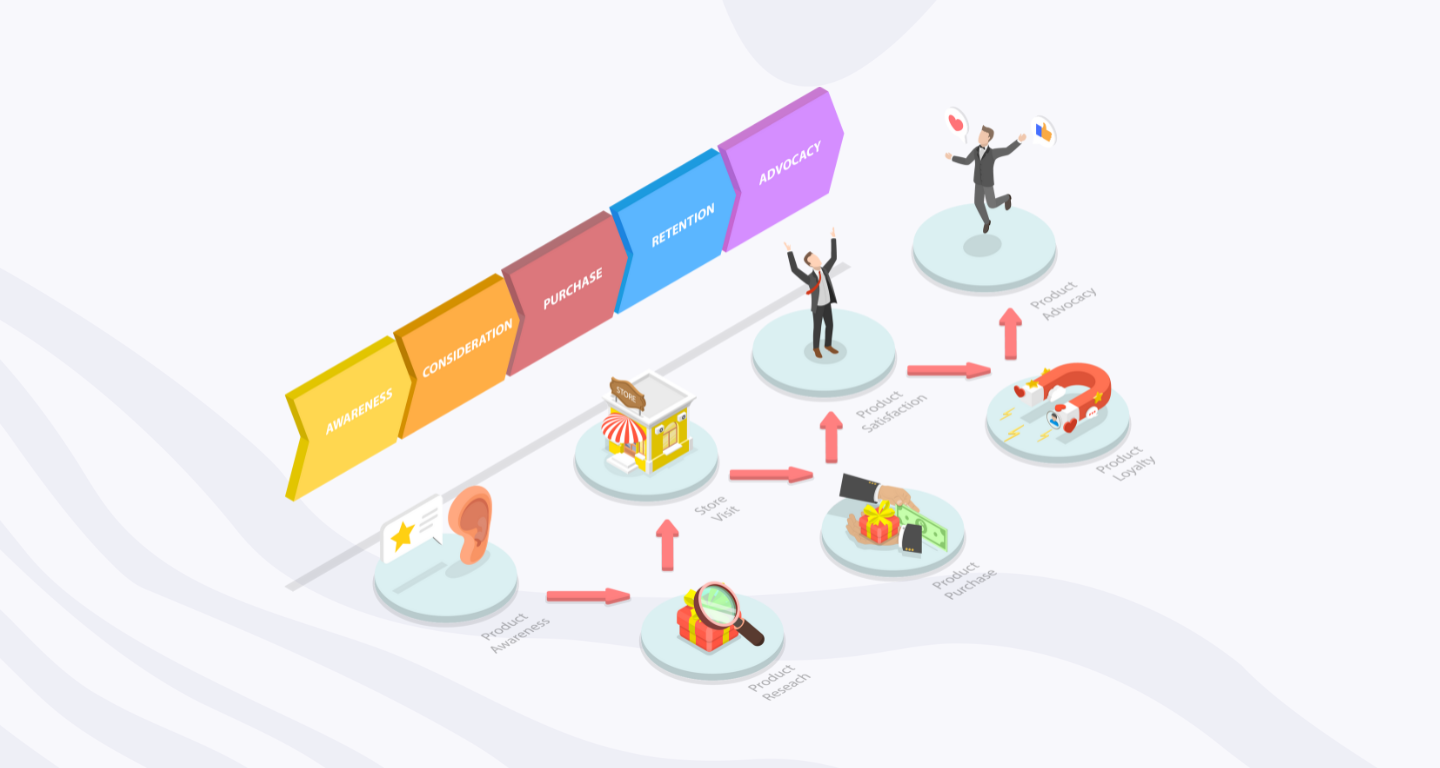Dheeraj Kumar
26/03/2024
-8 minutes read
Understanding the Phases of Product Experience
Explore the phases of the customer experience lifecycle and learn how to enhance customer satisfaction and loyalty. Dive into the key stages of the CX journey.
Customers hold the key to business success and there's no doubt about that. But, what is it that keeps customers not just coming back for more, but singing praises and referring friends? Well, the answer lies in the art of the customer experience lifecycle.
The question is: How can you ensure that their journey with your brand is not just memorable but extraordinary? In this blog, we'll explore the phases, discuss the customer experience lifecycle model, and provide actionable tips on how to improve customer life cycle stages. So, let's dive right in.
What Is Customer Experience Lifecycle?
To grasp the concept of the customer experience lifecycle, imagine it as a roadmap. Now what does a map do? It guides you, right? Similarly, CX lifecycle takes you through the entire journey a customer takes with your brand. It encompasses every interaction, right from the first point of contact to post-purchase engagement.
But what exactly is this lifecycle, and why is it so crucial in the world of business? Let's break it down.
Consider this: A customer doesn't just buy a product and vanish into the ether. They're on a continuous journey with your brand, one that involves awareness, engagement, purchase, loyalty, and advocacy. The quality of this journey directly impacts their satisfaction, loyalty, and their likelihood to promote your business to others.
Think about your favorite brands. What keeps you going back to them? It's likely the exceptional experience you have every step of the way. From the moment you first heard of them to your latest purchase, it's a journey filled with satisfaction and delight.
What Is the Customer Experience Lifecycle Model?
Let's now look at the inner workings of the customer experience lifecycle. When we have to deal with a complex subject, it is important to rely on a structured framework. This is what we call the customer experience lifecycle model. It acts like a guide to help us understand and manage CX better.
But, what does this model entail, and how does it help in creating exceptional customer experiences? Let's dive into the details:
One of the most widely adopted models is the five-phase model, which consists of the following key stages:
Reach: Imagine this as the initial phase of your customer's journey, where they become aware of your brand's existence. It's the moment when you capture their attention.
Acquisition: With their attention secured, the next step is to convert these intrigued individuals into actual customers. This is the phase where you make the sale happen.
Conversion: Once they've made their first purchase, your focus shifts to ensuring they return for more. It's about turning one-time buyers into repeat customers.
Retention: Keeping your customers engaged and satisfied post-purchase is crucial for long-term loyalty. In this phase, you nurture these relationships to ensure they remain loyal to your brand.
Advocacy: The pinnacle of the model is when your satisfied customers evolve into brand advocates. These are the individuals who not only continue to support your brand but also actively promote it to others.
How about we delve a little deeper into this?
What Are the Main Phases of the Customer Experience (CX) Lifecycle?
Within the broader customer experience lifecycle model, we can identify distinct phases, each with its unique characteristics and objectives. Let's navigate through these essential stages:

1. Awareness
In the awareness phase, potential customers become acquainted with your business's existence. This is the moment when you capture their attention and spark their curiosity.
During this stage, your goal is to stand out in a crowded marketplace. Effective strategies might include compelling marketing campaigns, captivating content, and strategic use of social media. The key is to make your brand known and relevant to your target audience.
2. Consideration
As your potential customers become aware of your brand, they move on to the consideration phase. Here, they begin evaluating your products or services against those of your competitors. This is a critical juncture where you need to differentiate your offerings.
Think about Amazon's product listings. Customers can read detailed product descriptions, view images, and scroll through user reviews. This information-rich environment helps potential buyers evaluate their options and make informed decisions.
Customer reviews, case studies, and transparent pricing can be valuable tools in this phase. Providing comprehensive information and addressing common queries can help potential customers make informed decisions in your favor.
3. Purchase
The purchase phase is where the action happens. It's when potential customers transition into actual buyers. This phase often marks the culmination of your marketing and engagement efforts, as the customer decides to trust your brand with their hard-earned money.
To ensure a smooth transition from consideration to purchase, focus on user-friendly purchase processes, clear calls to action, and incentives such as discounts or promotions. Make it easy and enticing for customers to complete the transaction.
4. Retention
Once a customer has made their purchase, your job is far from over; in fact, it's just beginning. The retention phase centers around keeping your customers engaged and satisfied with your brand.
Customer support, loyalty programs, and personalized communication play crucial roles here. Your goal is to ensure that your customers not only return for more but also feel valued and appreciated.
5. Advocacy
The final phase of the CX lifecycle is advocacy, and it represents the pinnacle of success. Satisfied customers evolve into brand advocates who not only continue to support your brand but actively promote it to others. Their enthusiasm becomes your most potent marketing tool.
Encouraging advocacy involves providing exceptional experiences and rewarding loyal customers. User-generated content, referrals, and testimonials are invaluable in this phase. The goal is to turn satisfied customers into your brand's most passionate advocates. Surveys can help immensely here.
If you're looking for a tool to help you gather valuable customer feedback and streamline your customer experience efforts, consider SurveySparrow. You can create surveys, and collect and analyze feedback. With the data it provides, you can make better choices to make your customers happier.
Try it today to see how it can improve your customer relationships!
